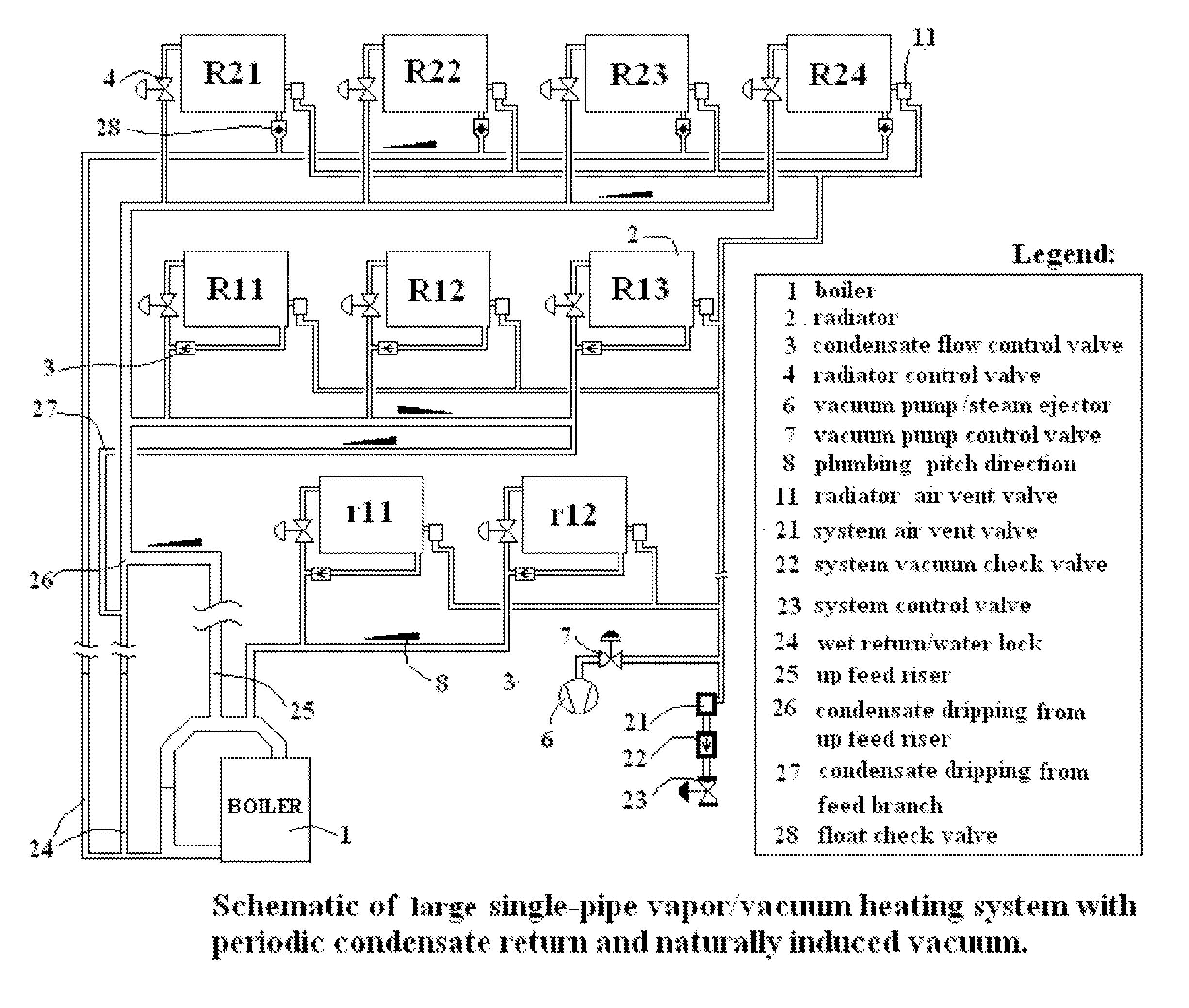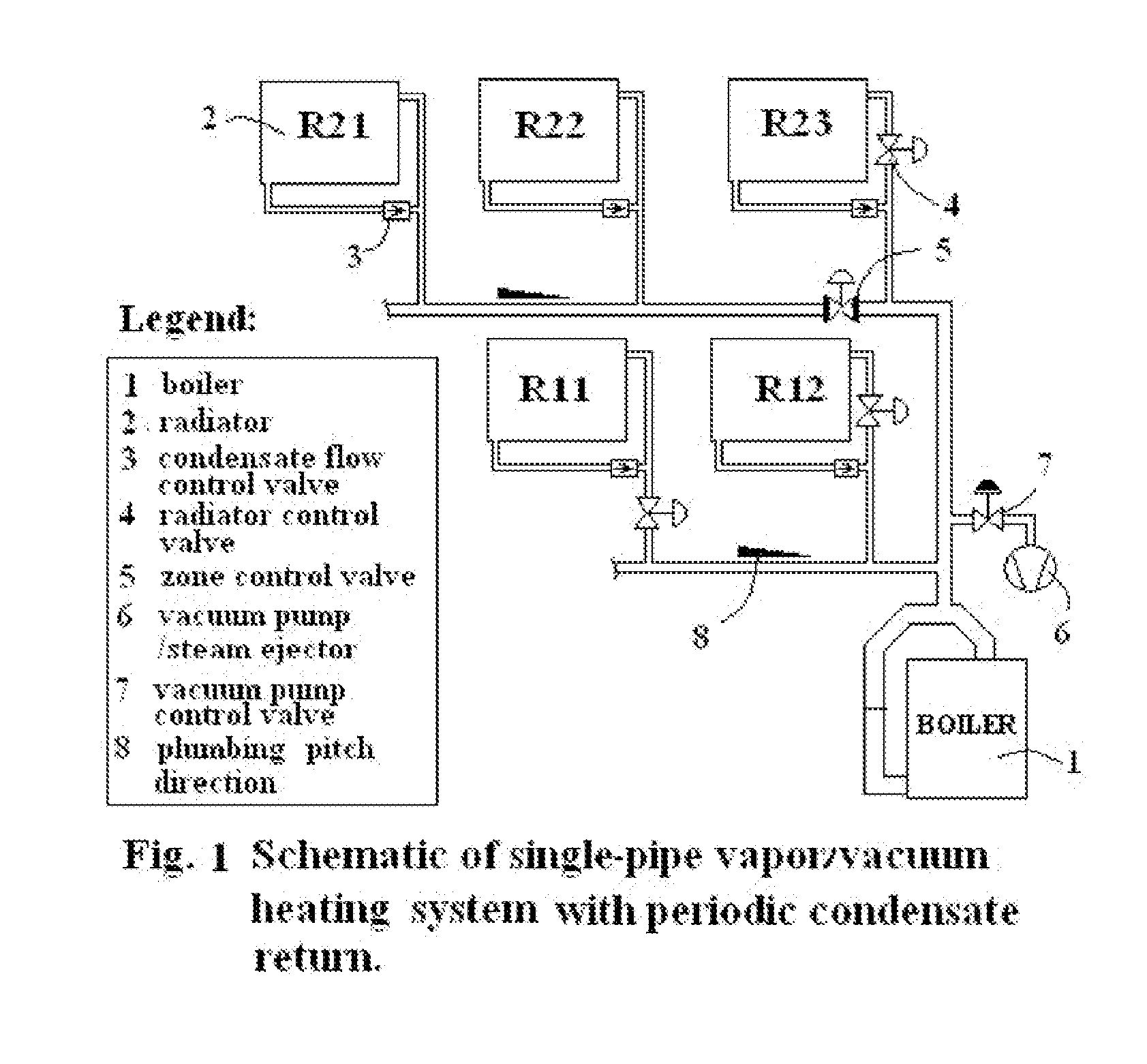Vapor/vacuum heating system
a heating system and vacuum technology, applied in the direction of lighting and heating apparatus, heating types, machines/engines, etc., can solve the problems of unfavorable heat dissipation, building overheating, and increased space heating costs by 3%, so as to prevent water hammering and eliminate rust problems
- Summary
- Abstract
- Description
- Claims
- Application Information
AI Technical Summary
Benefits of technology
Problems solved by technology
Method used
Image
Examples
Embodiment Construction
Certain embodiments will now be described in order to provide an overall understanding of the principles of the structure, function, manufacture, and use of the devices and methods disclosed herein. The features illustrated or described in connection with one embodiment may be combined with the features of other embodiments.
The steam / vacuum system of the present invention can be used in any building and / or dwelling as needed. For the purposes of the descriptions herein, the term “building” will be used to represent any home, dwelling, office building, and commercial building, as well as any other type of building as will be appreciated by one skilled in the art.
In an embodiment, a steam source is provided for producing and introducing steam into the systems described herein. The steam source can be any source known in the art capable of heating water to produce steam, including a boiler system located within the building to be heated or cooled, and / or an external district heating sy...
PUM
 Login to View More
Login to View More Abstract
Description
Claims
Application Information
 Login to View More
Login to View More - R&D
- Intellectual Property
- Life Sciences
- Materials
- Tech Scout
- Unparalleled Data Quality
- Higher Quality Content
- 60% Fewer Hallucinations
Browse by: Latest US Patents, China's latest patents, Technical Efficacy Thesaurus, Application Domain, Technology Topic, Popular Technical Reports.
© 2025 PatSnap. All rights reserved.Legal|Privacy policy|Modern Slavery Act Transparency Statement|Sitemap|About US| Contact US: help@patsnap.com



